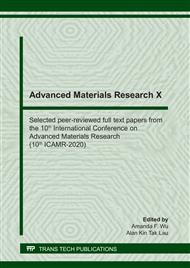p.92
p.97
p.102
p.109
p.115
p.120
p.126
p.131
p.142
Silt and Clay with Low Liquid Limits as Fill Materials for High-Speed Railway Embankments in China
Abstract:
Silt and clay with low liquid limits do not qualify as fill materials for high-speed railway (HSR) according to Chinese standard {TB, 10001 (2016)}. The present paper proposes using these materials as fillings for HSR embankments in an attempt to reduce the costs of exploiting and transporting qualifying fill materials. Our proposal of using silt and clay with low liquid limits is rooted in German standards {DIN,18196 (2006)} and {Ril, 836(1999)} and Japanese standards {ISBN 13: 9784621046692 (1999)}, and is preliminarily verified by operation experiences of the Zhengzhou–Xi'an HSR as well as other types of projects. On the basis of proven practices, a design cross-section for an HSR embankment constructed in from silt and clay with low liquid limits area is recommended combined with corresponding engineering measures.
Info:
Periodical:
Pages:
115-119
Citation:
Online since:
July 2020
Authors:
Keywords:
Price:
Сopyright:
© 2020 Trans Tech Publications Ltd. All Rights Reserved
Share:
Citation:


